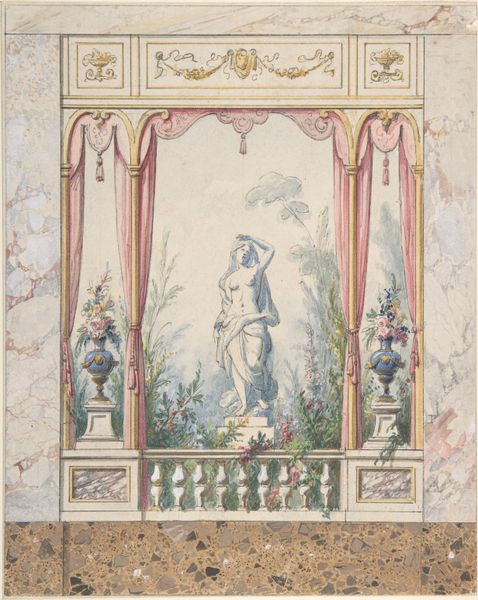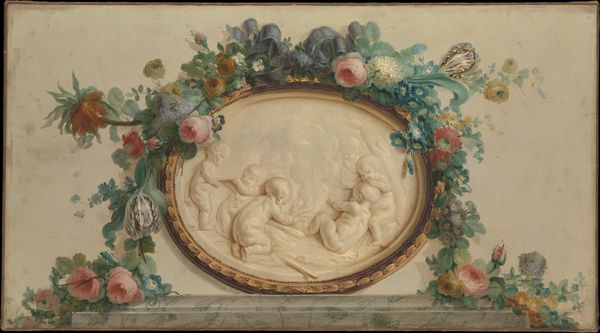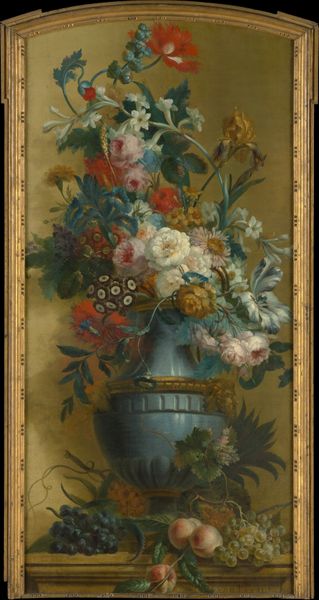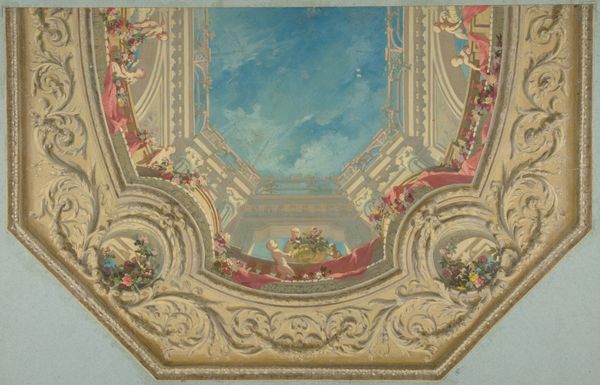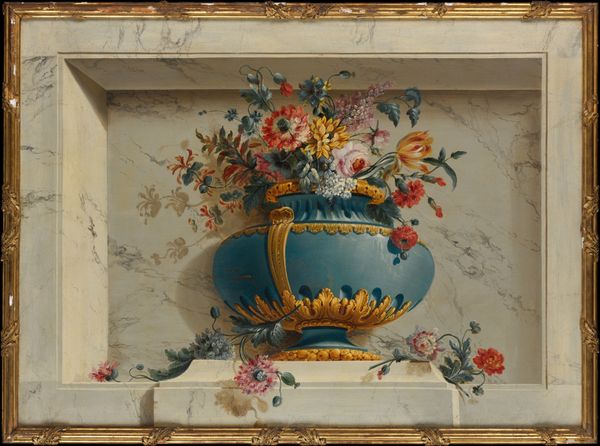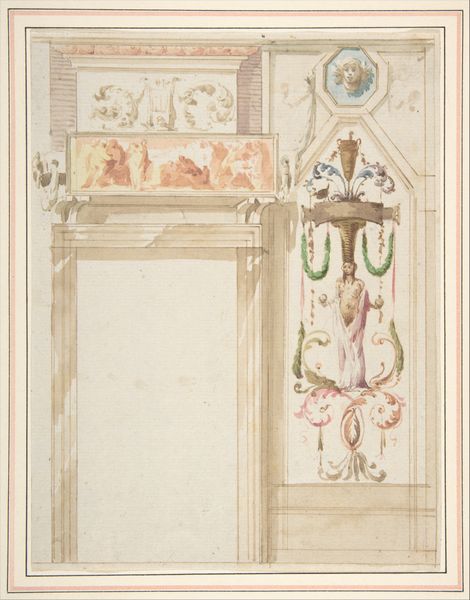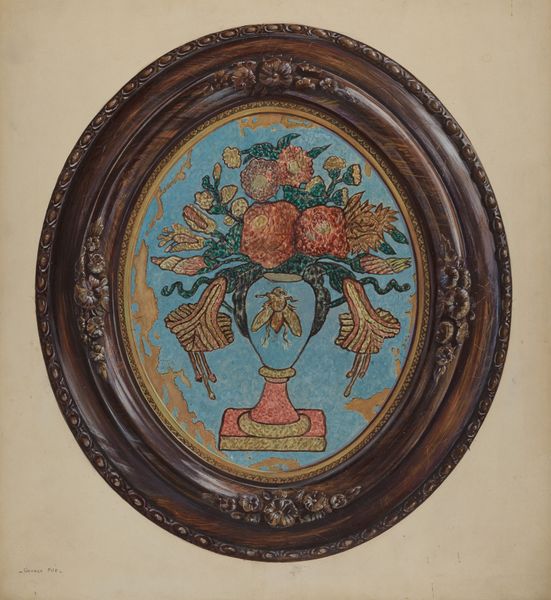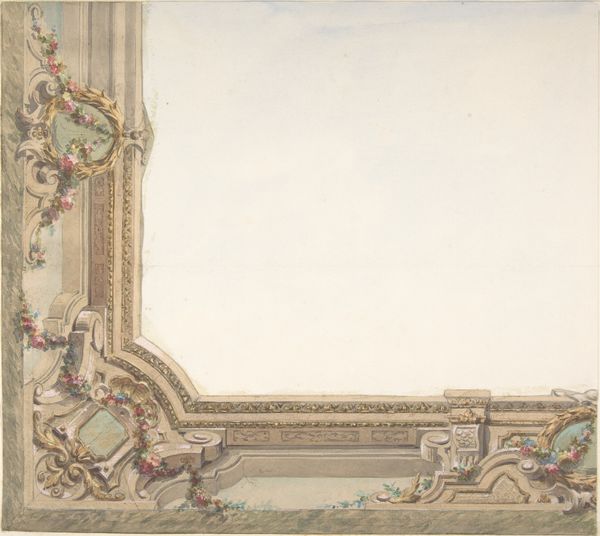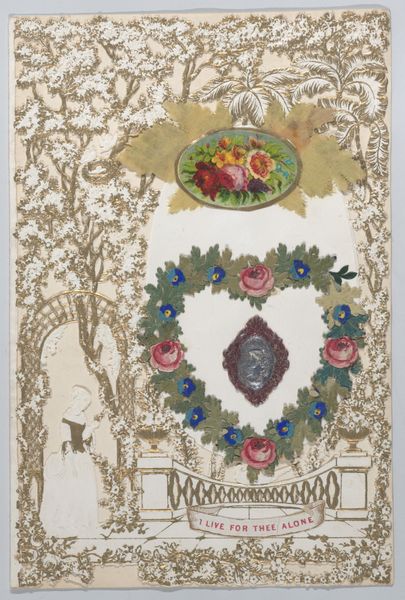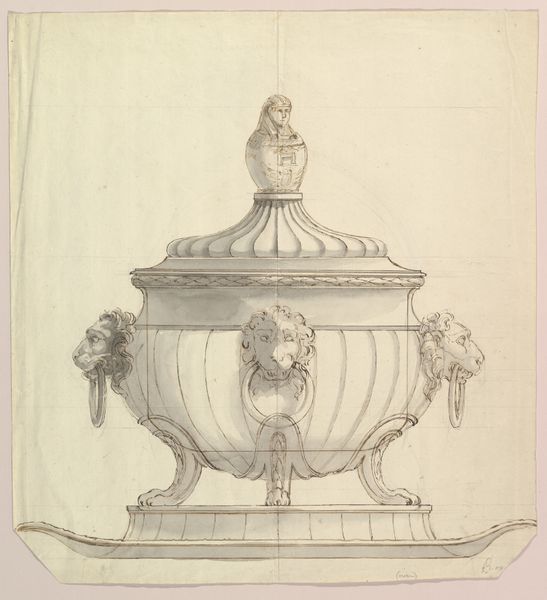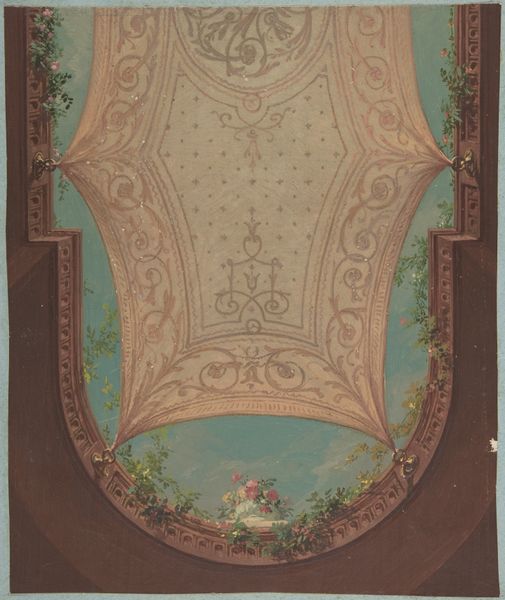
Trompe l'oeil design for a ceiling 1850 - 1900
0:00
0:00
Dimensions: Overall: 14 3/4 x 10 1/2 in. (37.4 x 26.6 cm)
Copyright: Public Domain
Jules-Edmond-Charles Lachaise designed this trompe l'oeil ceiling with gouache and graphite on paper. The illusionistic effect, which was popular in the 18th century, aims to trick the viewer into thinking that the painted objects are real. Here, Lachaise revives the conventions of aristocratic interior decoration, which had become newly fashionable among the wealthy in the late 19th and early 20th centuries. Note the vase overflowing with flowers, the architectural molding, and the classical figures in the relief below. These details would resonate with the upper classes, who often looked back to earlier periods of European history for their models of taste and refinement. The art of trompe l'oeil design invites us to consider the complex relationship between art and society. To better understand this work, scholars might consult architectural pattern books, social histories of taste, and museum records of acquisitions and commissions. Only then can we better grasp how the work reflects the social structures of its time.
Comments
No comments
Be the first to comment and join the conversation on the ultimate creative platform.
